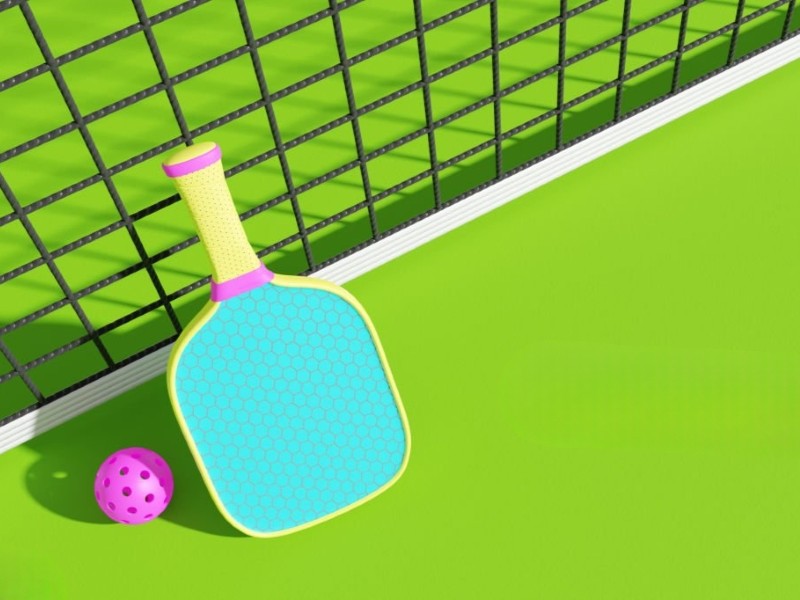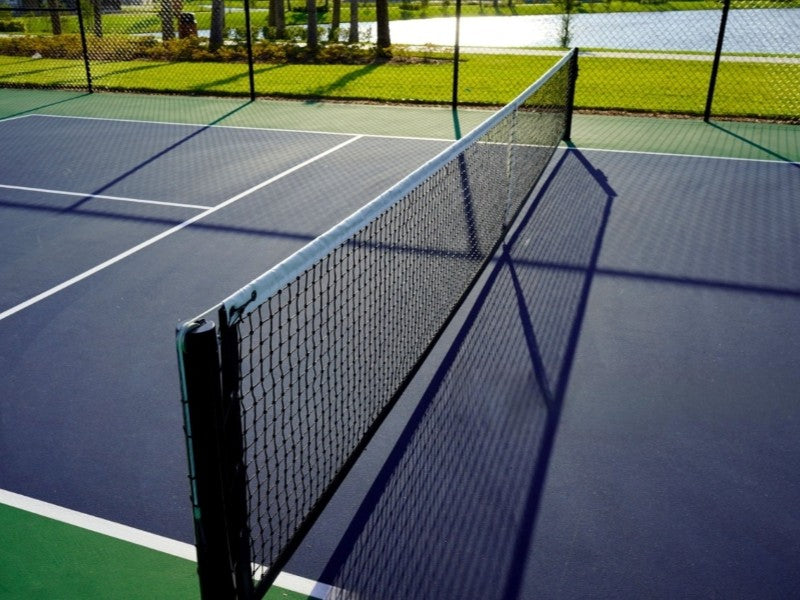At first glance, all pickleball balls may look the same: hollow plastic spheres with evenly spaced holes. But once you step onto the court, you quickly realize that not all balls perform alike. A ball that feels lively and controlled indoors might wobble uncontrollably outdoors. Another ball may hold up perfectly for weeks of recreational play, while a tournament-grade ball might crack after a single day of competitive matches.
Types of Pickleball Balls
Pickleball balls can be grouped into several categories, each designed for specific conditions and levels of play. Understanding these categories is the first step to making informed choices.
Indoor vs. Outdoor Balls
- Feature 26 larger holes for reduced air resistance in calm, enclosed spaces.
- Constructed with slightly softer plastic, making them quieter and easier to control.
- Bounce tends to be gentler and slower, favoring extended rallies and precise shot placement.
- Popular in gyms, wooden courts, and facilities where control is more important than speed.
- Have 40 smaller holes to minimize the effect of wind on flight.
- Made with harder plastic, providing higher bounce and faster speed.
- Built for durability against rough asphalt or concrete surfaces.
- More challenging to control but necessary for outdoor matches where pace and power dominate.
Key takeaway: Indoor balls enhance touch and consistency, while outdoor balls emphasize speed and resilience. Using the wrong ball for the wrong environment leads to poor gameplay and faster wear.

Tournament-Approved vs. Recreational Balls
Tournament-Approved Balls
- Must meet USA Pickleball (USAPA) specifications for size, weight, hardness, and bounce height.
- Provide consistent performance for fair competition.
- Often more expensive and less durable, since competitive standards prioritize playability over longevity.
Recreational Balls
- May not follow strict standards but are cost-effective and long-lasting.
- Great for practice, family play, and community centers.
- Tend to have wider tolerance in bounce and weight, which can make them inconsistent across games.
Key takeaway: Use sanctioned balls if you plan to compete; otherwise, recreational options may provide better value for casual or practice use.
Practice and Training Balls
Not all practice sessions require official equipment. Many brands now produce balls specifically for training:
- Durable training balls: Thicker walls for long-lasting drills.
- Soft practice balls: Lower bounce and reduced noise, ideal for indoor coaching or junior programs.
- Weighted balls: Slightly heavier for strength and coordination training.
These options help coaches structure lessons while keeping costs under control.
Specialty Balls
As pickleball grows, specialty balls have emerged to serve niche needs:
- Noise-reducing balls for communities with strict noise ordinances.
- Kid-friendly balls with lower bounce for young beginners.
- High-visibility colors (neon green, orange) for low-light conditions or televised matches.
These may not be used in tournaments but solve specific problems that regular indoor/outdoor balls cannot.
Comparison Table: Types of Pickleball Balls
|
Ball Type |
Holes |
Material Hardness |
Best Surface |
Key Advantages |
Limitations |
|
Indoor |
26 |
Softer plastic |
Wood, gym floors |
Better control, quiet |
Wears faster outdoors |
|
Outdoor |
40 |
Harder plastic |
Asphalt, concrete |
Faster, durable |
Harder to control |
|
Tournament-approved |
26/40 |
Standardized |
Any |
Consistent, regulated |
Higher cost, less durable |
|
Recreational |
26/40 |
Mixed |
Any |
Affordable, durable |
Less consistent |
|
Training/Specialty |
Varies |
Custom |
Any |
Tailored for purpose |
Not always competition-legal |
How Ball Construction Creates the Differences
The way a pickleball is made explains why two balls that look similar can feel dramatically different on the court. The following construction factors are most influential:
Material Composition
- Most balls are made of durable polymer plastic.
- Indoor balls use slightly softer plastic to reduce bounce and noise.
- Outdoor balls rely on harder plastic that resists abrasion and cracking.
- Recycled or mixed polymers are cheaper but may reduce consistency.
Wall Thickness
- Thicker walls improve durability but reduce liveliness and bounce.
- Thinner walls feel “poppier” but break faster under heavy hitting.
- Tournament balls often use thinner walls for responsiveness, even though it shortens lifespan.
Hole Size and Pattern
- Indoor balls: 26 larger holes → less air drag indoors, smoother trajectory.
- Outdoor balls: 40 smaller holes → more stable in wind, faster flight.
- Even a small difference in hole alignment affects aerodynamics and flight stability.
Weight and Diameter
- Standard range: 2.87–2.97 inches diameter and 0.78–0.935 ounces weight.
- Heavier balls = faster play, less affected by wind.
- Lighter balls = softer landings, easier control indoors.
Seam and Finish
- Seamless balls (molded in one piece) → better durability, higher consistency.
- Seamed balls (two halves joined) → may have slight imbalance but are cheaper to produce.
- Surface texture also matters: glossy finishes fly faster, matte finishes grip better on the paddle.
Key insight: Every construction choice balances durability, performance, and cost. Players should decide which trade-offs matter most for their goals.

Performance Differences That Impact Play
Once you understand construction, you can see how it translates into performance on the court.
Bounce and Rebound
- Indoor balls produce a lower, softer bounce that slows the pace of play.
- Outdoor balls generate a higher, firmer bounce, keeping rallies faster and more aggressive.
- Differences in wall thickness and hardness directly influence rebound height.
Speed and “Pop”
- Outdoor balls accelerate faster and respond sharply off the paddle.
- Indoor balls feel less explosive but offer smoother control for dinks and drop shots.
- Advanced players often prefer “poppier” balls for attacking, while beginners appreciate slower ones for learning.
Wind Sensitivity
- Larger holes = more wind drag (indoor balls not ideal outdoors).
- Smaller holes = less affected by wind (outdoor balls designed for stability).
- In breezy conditions, using the wrong ball can make rallies frustrating or unpredictable.
Durability and Longevity
- Outdoor balls are designed to survive asphalt and concrete, but even they crack over time.
- Indoor balls last longer on gym floors but wear out quickly on rough surfaces.
- Higher temperatures can soften plastic, while cold weather makes balls brittle.
How to Choose the Right Ball for Your Game
With so many variations, the question becomes: how do you choose the right ball for your specific situation? The answer depends on three major factors: environment, player level, and goals.
By Playing Environment
- Indoor courts (wood or synthetic floors): Choose indoor balls with 26 larger holes and softer plastic for slower, controlled rallies.
- Outdoor courts (asphalt or concrete): Go for outdoor balls with 40 smaller holes that resist wind and deliver faster play.
- Mixed conditions: If you play in both environments, keep separate sets of indoor and outdoor balls—using one type across both surfaces quickly shortens lifespan.
By Skill Level
- Beginners: A softer, more forgiving ball helps develop control and confidence. Indoor balls or softer recreational balls are ideal.
- Intermediate players: Transition to USAPA-approved outdoor or indoor balls for more realistic bounce and pace.
- Advanced/competitive players: Stick with sanctioned tournament balls to replicate match conditions.
By Environmental Factors
- Windy conditions: Always use outdoor balls with smaller holes to minimize drift.
- Cold weather: Keep extra balls on hand, since cold temperatures make balls brittle and prone to cracking.
- High heat: Harder balls may soften, so durability becomes a key selection factor.
Decision Flow in Simple Steps
- Identify where you’ll play most (indoor vs. outdoor).
- Match the ball type to your skill level (recreational vs. competitive).
- Adjust for special conditions (wind, cold, noise restrictions).
- Test two or three recommended models before buying in bulk.
Bottom line: Choosing correctly ensures you’re not just playing pickleball—you’re playing it the way it was meant to be enjoyed.
How to Test and Compare Pickleball Balls Yourself
Relying only on product descriptions isn’t enough. Players can easily test balls using simple methods to confirm performance differences.
Bounce Height Test
- Drop the ball from a height of 78 inches (2 meters) onto a hard surface.
- USAPA-approved balls should bounce 30–34 inches.
- Inconsistent bounce means the ball is either worn out or not competition standard.
Flight Stability Test
- Hit a series of serves outdoors.
- Observe if the ball wobbles or veers off course in the wind.
- Outdoor balls should fly straighter, while indoor balls may flutter.
Durability Check
- Play with a new ball for 1–2 hours of intense hitting.
- Examine for cracks, splits at seams, or deformities.
- Compare how long different brands last under the same conditions.
Spin & Control Test
- Use topspin and slice shots to check grip.
- A matte finish grips better on the paddle; glossy surfaces slide off faster.
- Advanced players should test whether the ball supports their playing style.
Record and Compare
Create a simple chart with rows for each brand and columns for bounce, speed, durability, and feel. Testing across categories helps clubs and individuals decide which ball to purchase in bulk.
Maintenance, Lifespan, and Cost Efficiency
Even the best pickleball balls won’t last forever. Proper maintenance and smart buying can save players significant money.
Proper Storage
- Keep balls out of extreme heat (e.g., car trunks in summer).
- Store indoors at moderate temperatures to prevent brittleness.
- Use mesh bags for ventilation rather than airtight containers.
Cleaning Tips
- Wipe with a damp cloth after play on dusty outdoor courts.
- Avoid abrasive cleaners that scratch surfaces.
- Clean balls help maintain consistent bounce and prevent premature cracking.
Recognizing When to Replace a Ball
- Noticeably flat bounce.
- Visible cracks or seam splits.
- Irregular flight patterns or wobbling.
- Softened plastic that feels “squishy” compared to new balls.
Lifespan Averages
- Indoor balls: 1–3 months for casual play.
- Outdoor balls: 10–20 games before cracking, depending on surface roughness.
- Tournament balls: May last only a few matches due to thinner walls.
Cost-Efficiency Tips
- Buy bulk packs for clubs or frequent players.
- Mix recreational balls for practice with sanctioned balls for competition prep.
- Rotate balls in use to avoid wearing out a single set too quickly.
Insight: While premium balls may cost more, they often deliver better performance. Recreational players may save by using less expensive models, but competitive athletes should invest in tournament-approved options.
The difference in pickleball balls is not trivial—it shapes the pace, fairness, and enjoyment of the game. Indoor balls favor control and rallies, while outdoor balls demand speed and durability. Tournament-approved options ensure consistency, but recreational and specialty balls fill important roles for practice and community play.









Leave a comment
This site is protected by hCaptcha and the hCaptcha Privacy Policy and Terms of Service apply.